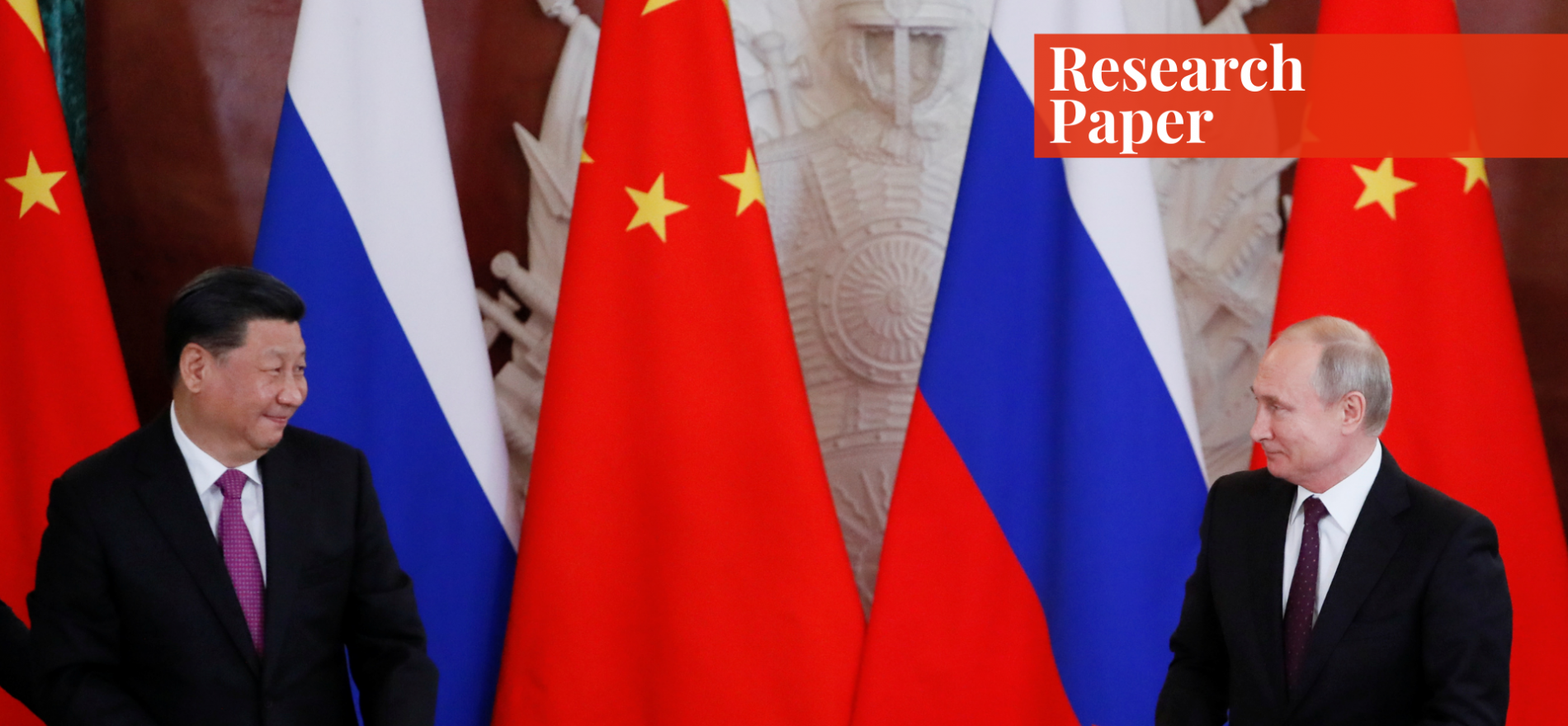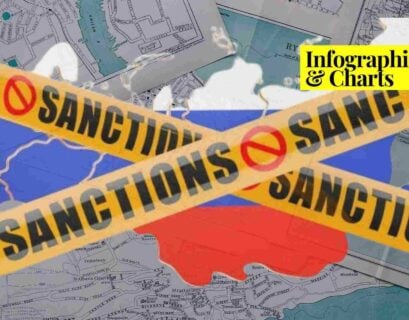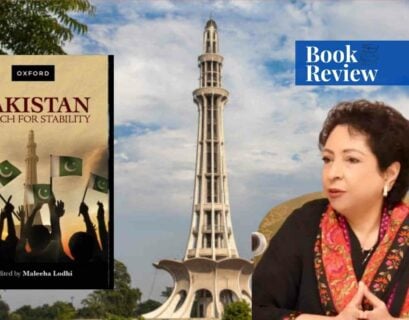Ramsha Qaiser is an IR graduate from Quaid-e-Azam University. She loves to sit with a cup of coffee to pen down her thoughts. She is keen on finding potential solutions to problems that concern the world.
Introduction
When the global order shifted from a bipolar towards that of a unipolar, Russia, the former Soviet Union, began its quest for other allies and partners to regain its former status. As the rift of Russia with the West grew, it expanded its strategic and economic partnerships with other major countries. One such development can be seen in Chinese and Russian relations or the Sino-Russian partnership.1
While there are many divergences and convergences in the interests of this partnership, it still maintains a key location in Central Asia, a continent rich in resources and that continues to be under Russian influence even after independence. China, by way of economic means and soft power, is slowly shifting the geopolitical landscape. The question thus arises: Will Russia compete against the Chinese growing footprint in the region, or will it cooperate to keep the Sino-Russian partnership?
Sino-Russian Relations
After the disintegration of the Soviet Union, that de facto US-China alliance ended, and a China–Russia partnership began in 1991. In 1992, Russia and China announced a “constructive partnership”, and in 1996, they agreed to step towards a strategic partnership.
However, 2014 introduced a new dimension in geopolitics; Russian President Vladimir Putin’s attack on Ukraine and the annexation of Crimea was met with substantial economic sanctions from Europe and the United States, debilitating Russia’s ties with the West and leaving Russia wanting to reinforce and strengthen ties with China.
The rationale that has driven both Russia and China closer has been the desire for multipolar world order.2 The two countries also have shared norms such as respect for sovereignty, non-interference in domestic politics, and territorial integrity. Sino-Russian relations have emerged not as key bilateral relations but also at a more systematic level.
However, at the current level, the two countries are not at the level of alliance but alignment. China played the role of a savior, a major safeguard against the damage by western sanctions to the Russian economy.
Diplomatic Partnership

The two countries maintain neutrality on matters which are not aligned with their interests such as the South China Sea and Crimea. China has been the central piece of the key element to Russia’s pivot to Asia and its desire to become part of the regional integration. Moreover, Far East Russia is closer to China than the Russian capital itself and so China plays an important role in terms of foreign trade.3
Security Partnership
Both China and Russia have been convening special meetings aimed at discussing security-related concerns such as counterterrorism, avoiding bilateral conflicts, border security, and containing the United States.4 Several joint military exercises and defense dialogues have been taking place.
Anatoly Antonov, former Russian deputy defense minister once said that exercises display a “high level of practical cooperation” and “help improve combat skills and credibility of the Russian and Chinese armed forces and demonstrate the defense ministries’ readiness to effectively counter modern challenges and threats together.”5
Economic Partnership

In 2017 alone, Russia exported US$15 billion worth of weapons to the Chinese government. Russia exports the Sukhoi Su-35, the S-400 missile defense system, Kamov helicopters, the AL-31F engines, and the D-30 engines.6
In 2018, the all-out estimation of exchange between Russia and China surpassed $100 billion for the first time.7 Oil and different minerals represented 76% of Russian exports to China, with wood and paper items responsible for another 8%.8
Convergences and Divergences
These are, however, convergences and divergences in Chinese and Russian relations, mainly existing due to the instinct of dominance.9 A key element in Sino-Russian relations is that of BRICS – the dominant economies of Brazil, Russia, India, China, and South Africa.10 It aims to shift the global world order towards the East rather than the West. BRICS is primarily held together by Chinese and Russian relations.
The major issue is the difference of viewpoints of both countries, which is mainly a result of their history.11 Russia’s vision of a multipolar world is the one where power dispensation is divided among regional blocs, further challenging the United States’ aim to unilaterally rule the entire globe.
One important obstacle is the lack of convergence at the global level: China gives off an impression of being really keen on adding to its politico-economic steadiness, while Moscow looks for a matter that would affirm its incredible power status.12 Through subtle means, China is building a foundation of power and strengthening its footprint and thus bringing in regional rivalry between the two.13
Sino-Russian relations are more of a basic and common understanding against the West with deep-seated conflict and geopolitical conflict at the back.14 The only way for Russia to contain China’s influence is by increasing its own investments in all of these areas Russia, in the interim, is plainly experiencing a significantly more profound identity crisis.
China and Russia in Central Asia
Russia’s vision of a multipolar world is the one where power dispensation is divided among regional blocs, further challenging the United States’ aim to unilaterally rule the entire globe. Russia has thus tried to build its hegemonic leadership and take part in developing many regional structures such as the Collective Treaty Security Organization (CSTO), the Shanghai Cooperation Organization (SCO), the Eurasian Economic Union (EEU), among others in order to create a multipolar world.
China is emerging as one of the world’s most powerful states with a booming economy; however, there is a factor of its dependence on the neighboring region of Central Asia not only to import oil and gas but also to keep its security position intact. China’s phenomenal financial development drove a few researchers to infer that it would supplant the United States as the future worldwide hegemon.15
Be that as it may, China’s goals are yet obscure and hard to extrapolate from its frequently conflicting positions. After the 1990s, there has been greater investment in Central Asia, especially in the energy and trade sectors. China wants to diversify its energy resources and for that, it imports a huge amount of oil and gas from Central Asia, which is also very reasonable since there are no hurdles or blockades like the one China has to face in the Strait of Malacca.
Central Asia is not only an energy supplier but also acts as an energy transit for China. China is thus making a lot of pipelines from Turkmenistan and Kazakhstan to Bandar Abbas, part of southern Iran, adjacent to the Persian Gulf. This project enables China to transport oil from the Middle East to itself. After explaining the potential of both states we have come to the understanding that the fate of Sino-Central Asian relations is profoundly inserted in joint issues and normal interests.16
Conclusion
What’s more, distracted with pulling back from Afghanistan without destabilizing the district, the United States needs Beijing to help animate Central Asia’s monetary improvement. Russia, too, started building on its military presence in Tajikistan and Kyrgyzstan.
Russia can’t live in seclusion, and so it needs to work with other countries to counter Chinese influence and growth but also remain on the cooperation side. In order for Russia to participate in meaningful developments for its Far East, China’s financial incentives are necessary which happen to create another front for cooperation.
Endnotes
1 Richard C. Bush et al., “The emerging China-Russia axis: The return of geopolitics,” Brookings, accessed February 18, 2021, https://www.brookings.edu/events/the-emerging-china-russia-axis-the-return-of-geopolitics/.
2 Elizabeth Wishnek, “Russia, China, and the United States in Central Asia: Prospects for Great Power Competition and Cooperation in the Shadow of the Georgian Crisis,” Strategic Studies Institute, accessed February 18, 2021, https://www.files.ethz.ch/isn/97061/US_Russia_CentralAsia_Feb2009.pdf.
3 Paul Stronski and Nicole Ng, “Cooperation and Competition: Russia and China in Central Asia, the Russian Far East, and the Arctic,” Carnegie Endowment for International Peace, accessed February 18, 2021, https://carnegieendowment.org/2018/02/28/cooperation-and-competition-russia-and-china-in-central-asia-russian-far-east-and-arctic-pub-75673.
4 Russell Ong, China’s Security Interests in the Post-Cold War Era (Routledge, 2001).
5 Michael S. Chase et al., “Russia-China Relations: Assessing Common Ground and Strategic Fault Lines,” The National Bureau of Asian Research, accessed February 18, 2021, https://carnegieendowment.org/files/SR66_Russia-ChinaRelations_July2017.pdf
6 Keegan Elmer and Liu Zhen, “What Russian weapons are being bought by China?,” South China Morning Post, Sep. 21, 2018, https://www.scmp.com/news/china/military/article/2165182/what-weapons-china-buying-russia.
7 Yohei Ishikawa, “Russia’s cozy economic ties with China are not all they seem,” The Nikkei, July 4, 2019, https://asia.nikkei.com/Spotlight/Comment/Russia-s-cozy-economic-ties-with-China-are-not-all-they-seem.
8 Ishikawa, “Russia’s cozy economic ties,”.
9 Marcin Kaczmarski, “Convergence or divergence? Visions of world order and the Russian-Chinese relationship,” European Politics and Society 20, no. 2 (2019): 207-224, https://doi.org/10.1080/23745118.2018.1545185.
10 Bobo Lo, “The Illusion of Convergence—Russia, China, and the BRICS,” Ifri, accessed February 18, 2021, https://www.ifri.org/sites/default/files/atoms/files/ifri_rnv_92_bobo_lo_brics-eng_march_2016_0.pdf.
11 Sebastian Krapohl and Alexandra Vasileva-Dienes, “The region that isn’t: China, Russia and the failure of regional integration in Central Asia,” Asia Europe Journal 18, no. 3 (2020): 347-366, https://link.springer.com/article/10.1007%2Fs10308-019-00548-0.
12 Aleksandr Pikalov, “Uzbekistan between the great powers: a balancing act or a multi-vectorial approach?,” Central Asian Survey 33, no. 3 (2014): 297-311, https://doi.org/10.1080/02634937.2014.930580.
13 Baktybek Beshimov and Ryskeldi Satke, “The struggle for Central Asia: Russia vs China,” Al-Jazeera, Mar. 12, 2014, https://www.aljazeera.com/opinions/2014/3/12/the-struggle-for-central-asia-russia-vs-china.
14 Benno Zogg, “Cooperation, Co-existence or Clash? China and Russia’s Ambitions in Central Asia,” The Diplomat, November 08, 2019, https://thediplomat.com/2019/11/cooperation-co-existence-or-clash-china-and-russias-ambitions-in-central-asia/.
15 Martha Brill Olcott, “China’s Unmatched Influence in Central Asia,” Carnegie Endowment for International Peace, accessed February 18, 2021, https://carnegieendowment.org/2013/09/18/china-s-unmatched-influence-in-central-asia-pub-53035.
16 Hiroyuki Akita, “Russia and China romance runs into friction in Central Asia,” The Nikkei, July 29, 2019, https://asia.nikkei.com/Spotlight/Comment/Russia-and-China-romance-runs-into-friction-in-Central-Asia.
Bibliography
- Akita, Hiroyuki. “Russia and China romance runs into friction in Central Asia.” The Nikkei, July 29, 2019. https://asia.nikkei.com/Spotlight/Comment/Russia-and-China-romance-runs-into-friction-in-Central-Asia.
- Beshimov, Baktybek, and Ryskeldi Satke. “The struggle for Central Asia: Russia vs China.” Al-Jazeera, Mar. 12, 2014. https://www.aljazeera.com/opinions/2014/3/12/the-struggle-for-central-asia-russia-vs-china.
- Bush, Richard C., Akihiro Iwashita, Thomas Wright, Chisako T. Masuo, and David Gordon. “The emerging China-Russia axis: The return of geopolitics.” Brookings. Accessed February 18, 2021. https://www.brookings.edu/events/the-emerging-china-russia-axis-the-return-of-geopolitics/.
- Chase, Michael S., Evan S. Medeiros, J. Stapleton Roy, Eugene B. Rumer, Robert Sutter, and Richard Weitz. “Russia-China Relations: Assessing Common Ground and Strategic Fault Lines.” The National Bureau of Asian Research. Accessed February 18, 2021. https://carnegieendowment.org/files/SR66_Russia-ChinaRelations_July2017.pdf
- Elmer, Keegan, and Liu Zhen. “What Russian weapons are being bought by China?” South China Morning Post, Sep. 21, 2018. https://www.scmp.com/news/china/military/article/2165182/what-weapons-china-buying-russia.
- Ishikawa, Yohei. “Russia’s cozy economic ties with China are not all they seem.” The Nikkei, July 4, 2019. https://asia.nikkei.com/Spotlight/Comment/Russia-s-cozy-economic-ties-with-China-are-not-all-they-seem.
- Kaczmarski, Marcin. “Convergence or divergence? Visions of world order and the Russian-Chinese relationship.” European Politics and Society 20, no. 2 (2019): 207-224. https://doi.org/10.1080/23745118.2018.1545185.
- Krapohl, Sebastian, and Alexandra Vasileva-Dienes. “The region that isn’t: China, Russia and the failure of regional integration in Central Asia.” Asia Europe Journal 18, no. 3 (2020): 347-366. https://link.springer.com/article/10.1007%2Fs10308-019-00548-0.
- Lo, Bobo. “The Illusion of Convergence—Russia, China, and the BRICS.” Ifri. Accessed February 18, 2021. https://www.ifri.org/sites/default/files/atoms/files/ifri_rnv_92_bobo_lo_brics-eng_march_2016_0.pdf.
- Olcott, Martha Brill. “China’s Unmatched Influence in Central Asia.” Carnegie Endowment for International Peace. Accessed February 18, 2021. https://carnegieendowment.org/2013/09/18/china-s-unmatched-influence-in-central-asia-pub-53035.
- Ong, Russell. China’s Security Interests in the Post-Cold War Era. Routledge, 2001.
- Pikalov, Aleksandr. “Uzbekistan between the great powers: a balancing act or a multi-vectorial approach?” Central Asian Survey 33, no. 3 (2014): 297-311. https://doi.org/10.1080/02634937.2014.930580.
- Stronski, Paul, and Nicole Ng. “Cooperation and Competition: Russia and China in Central Asia, the Russian Far East, and the Arctic.” Carnegie Endowment for International Peace. Accessed February 18, 2021. https://carnegieendowment.org/2018/02/28/cooperation-and-competition-russia-and-china-in-central-asia-russian-far-east-and-arctic-pub-75673.
- Wishnek, Elizabeth. “Russia, China, and the United States in Central Asia: Prospects for Great Power Competition and Cooperation in the Shadow of the Georgian Crisis.” Strategic Studies Institute. Accessed February 18, 2021. https://www.files.ethz.ch/isn/97061/US_Russia_CentralAsia_Feb2009.pdf.
- Zogg, Benno. “Cooperation, Co-existence or Clash? China and Russia’s Ambitions in Central Asia.” The Diplomat, November 08, 2019. https://thediplomat.com/2019/11/cooperation-co-existence-or-clash-china-and-russias-ambitions-in-central-asia/.
If you want to submit your articles and/or research papers, please check the Submissions page.
The views and opinions expressed in this article/paper are the author’s own and do not necessarily reflect the editorial position of Paradigm Shift.



















